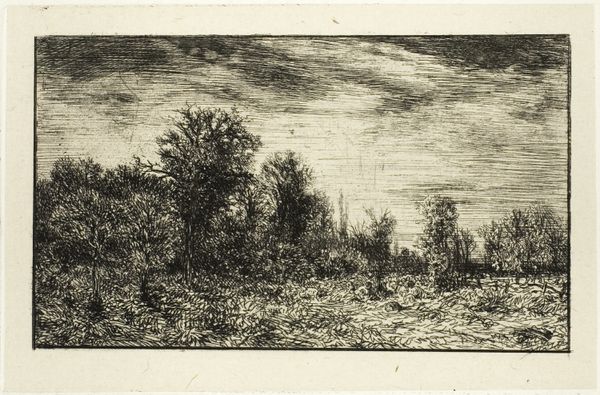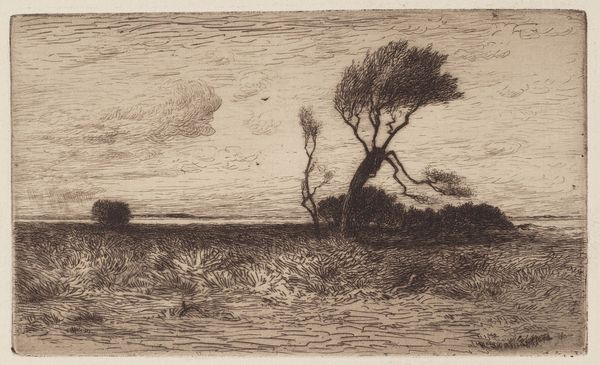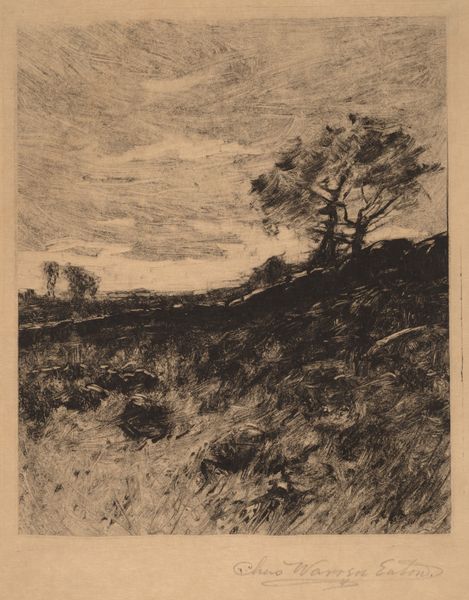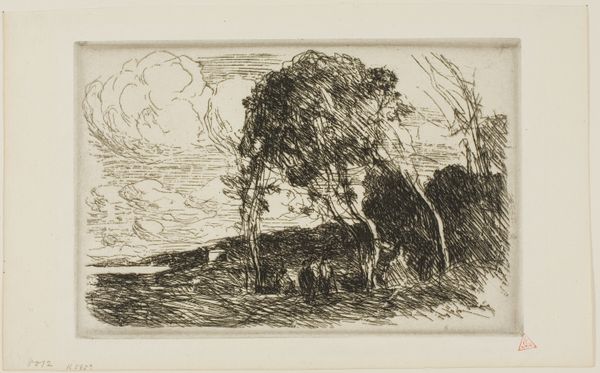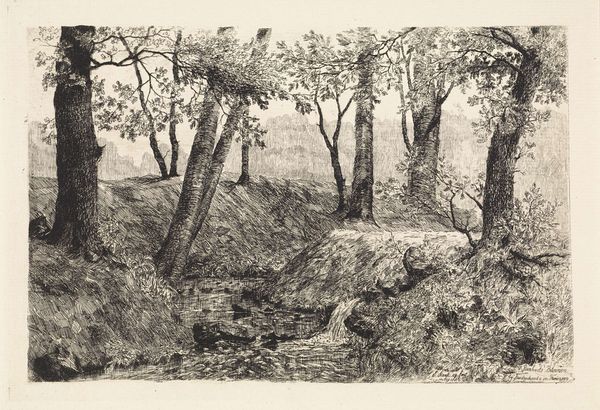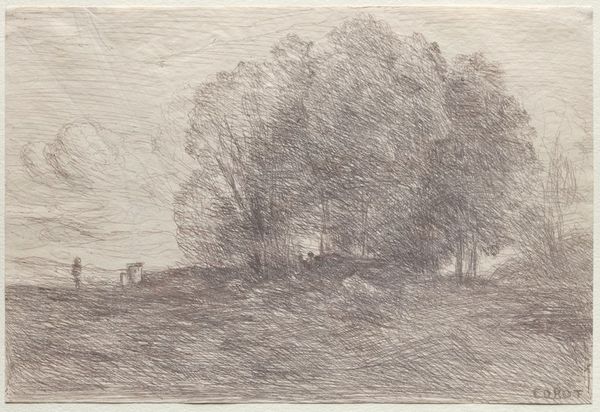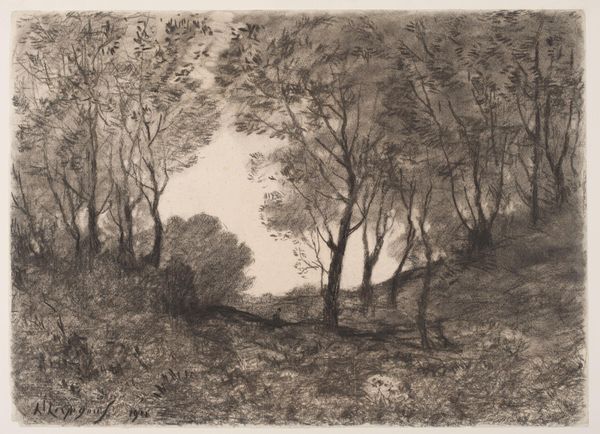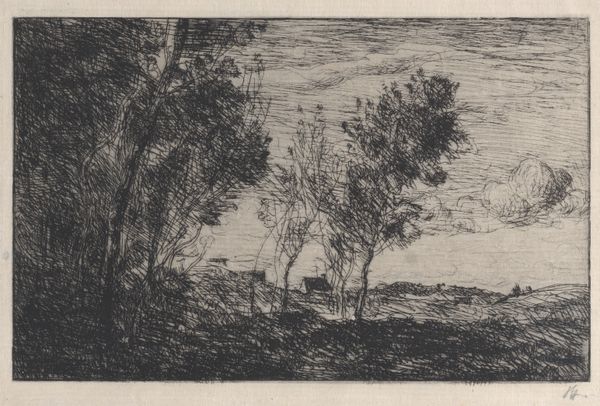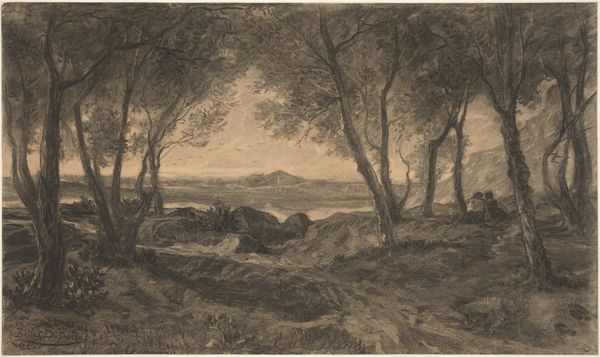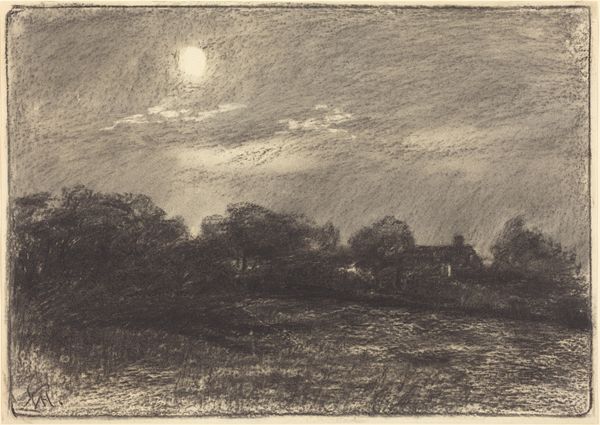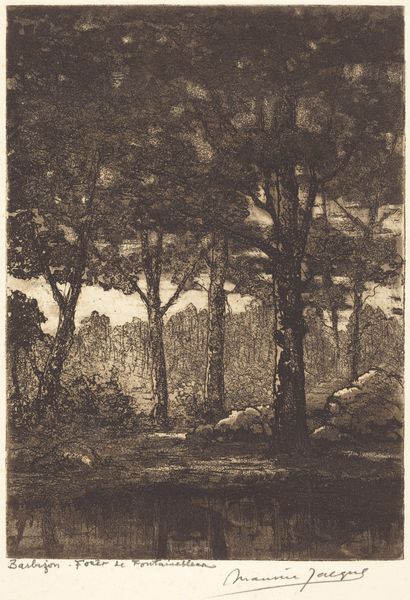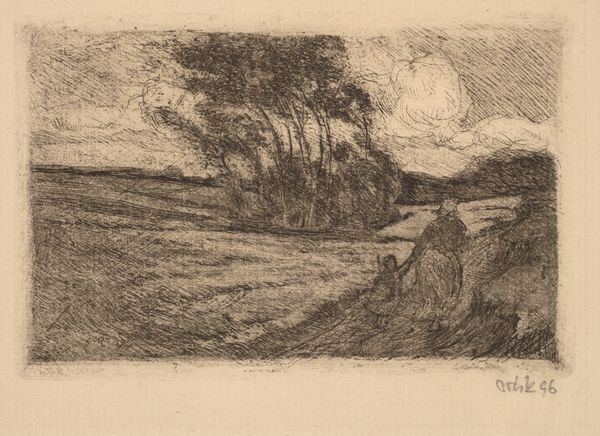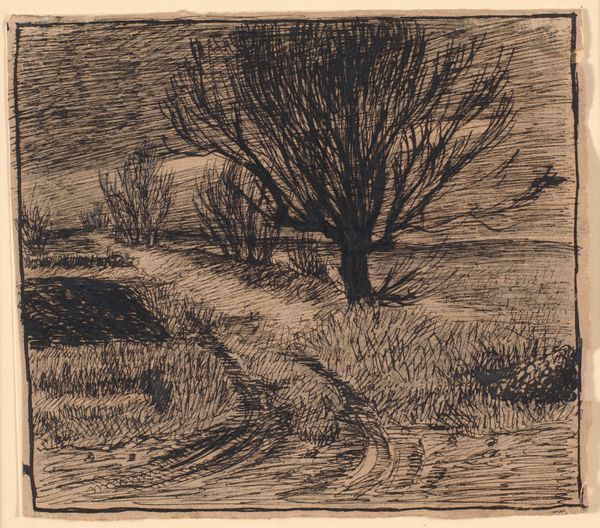
Le Pré des Graves à Villerville (Calvados) 1875
0:00
0:00
drawing, print, etching, plein-air, paper
#
drawing
# print
#
impressionism
#
etching
#
plein-air
#
landscape
#
paper
#
france
#
realism
Dimensions: 127 × 206 mm (image); 162 × 243 mm (plate); 249 × 361 mm (sheet)
Copyright: Public Domain
Editor: Right, next up is "Le Pré des Graves à Villerville (Calvados)" by Charles-François Daubigny, created in 1875. It's an etching on paper and, even in this small scale, the landscape feels vast and windswept. It really captures the feel of the French countryside. What's your take on this piece? Curator: What strikes me is how Daubigny uses a seemingly simple landscape to explore shifting socio-political values. Mid-19th century France was experiencing rapid industrialization and urbanization. How do you think art, particularly landscapes, played a role in that transformation? Editor: Maybe landscapes offered a kind of idealized escape from the realities of city life? Curator: Precisely. Daubigny and others, deeply rooted in Realism yet paving the way for Impressionism, emphasized the beauty of everyday rural life, implicitly critiquing the disruptive effects of modernization. Notice the deliberate focus on agriculture with the grazing animals. The composition promotes a sense of serenity. It romanticizes the rural as intrinsically wholesome. Editor: I see what you mean. It's not just a pretty scene, it's making a statement about what's valuable in society at that time. Curator: Consider also the role of exhibitions and the art market. As urban audiences grew, so did the demand for images that provided a counterpoint to their daily experience. The proliferation of landscapes speaks volumes about anxieties surrounding societal change and longing for simpler times. This etching, then, becomes a consumable symbol of that idealized rural past. Does this artwork spark new questions for you about our present? Editor: Absolutely. It makes me think about what images and symbols we consume today and what anxieties *they* might be reflecting back at us about our relationship to the natural world, now and then. Curator: Indeed, examining Daubigny’s world reframes how we perceive our own. The politics of imagery are timeless, just evolving with their times.
Comments
No comments
Be the first to comment and join the conversation on the ultimate creative platform.
